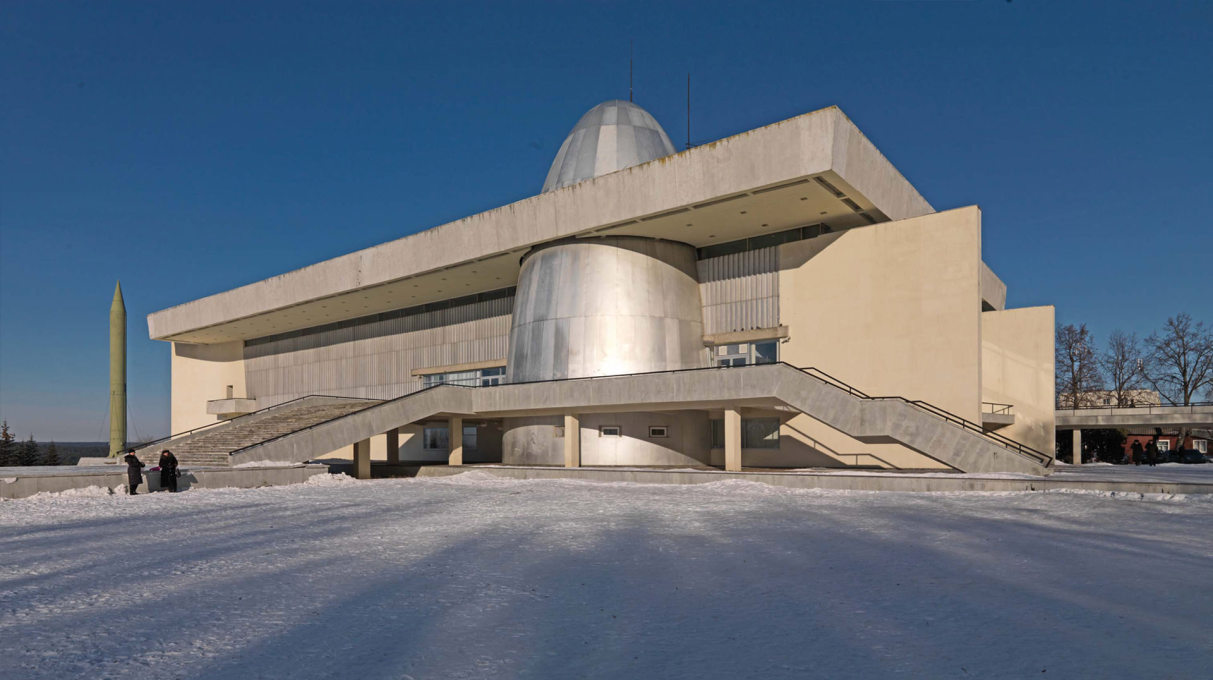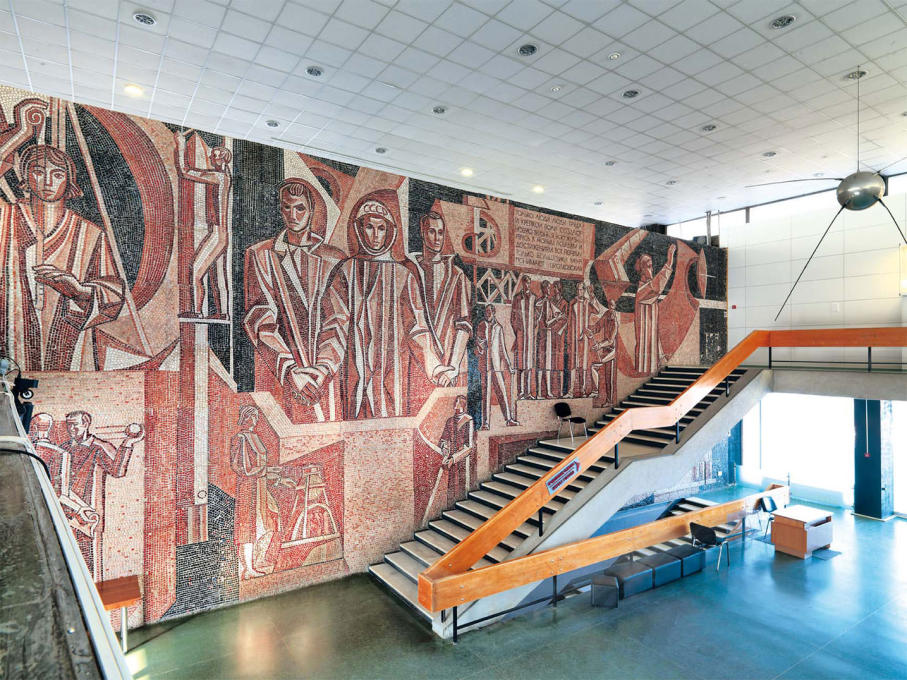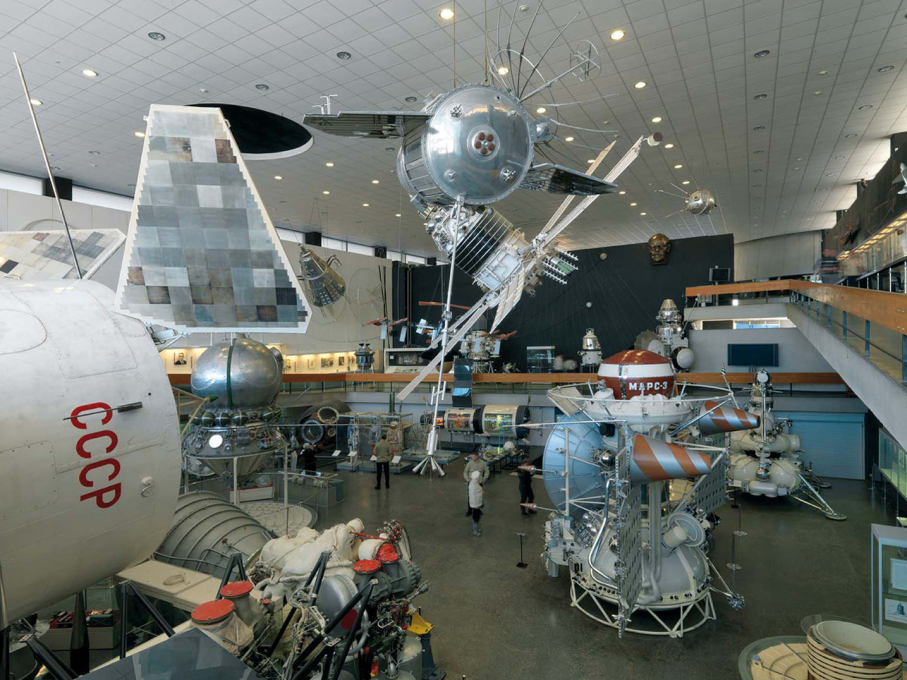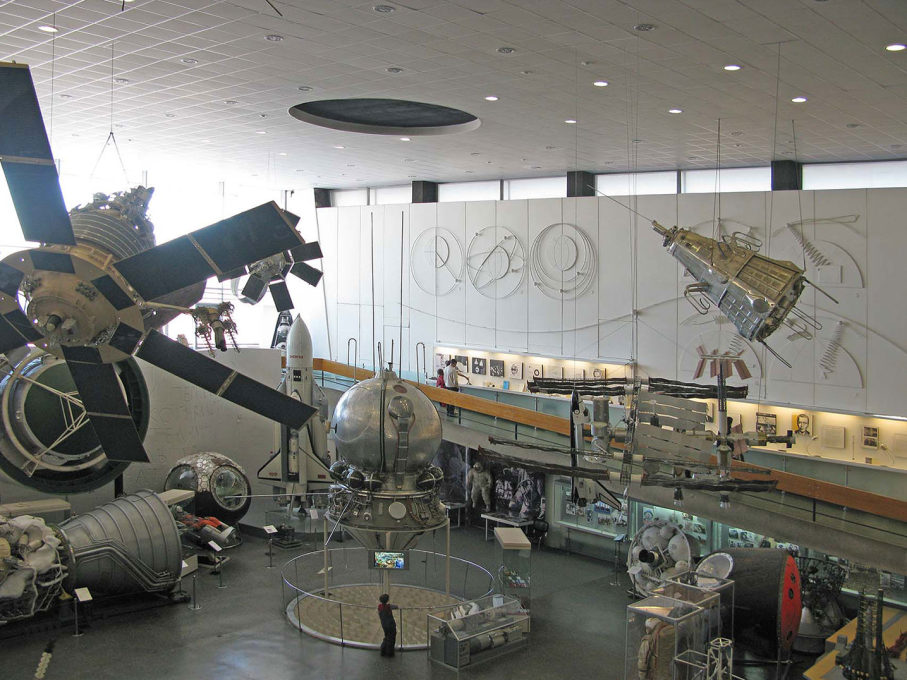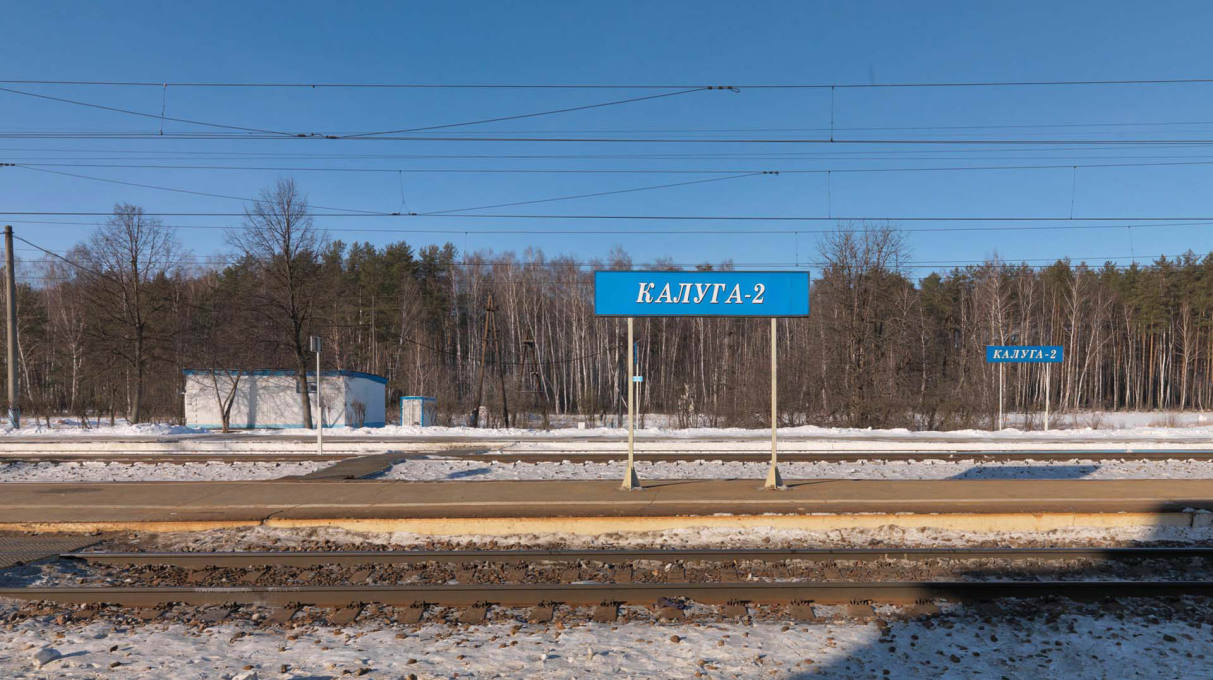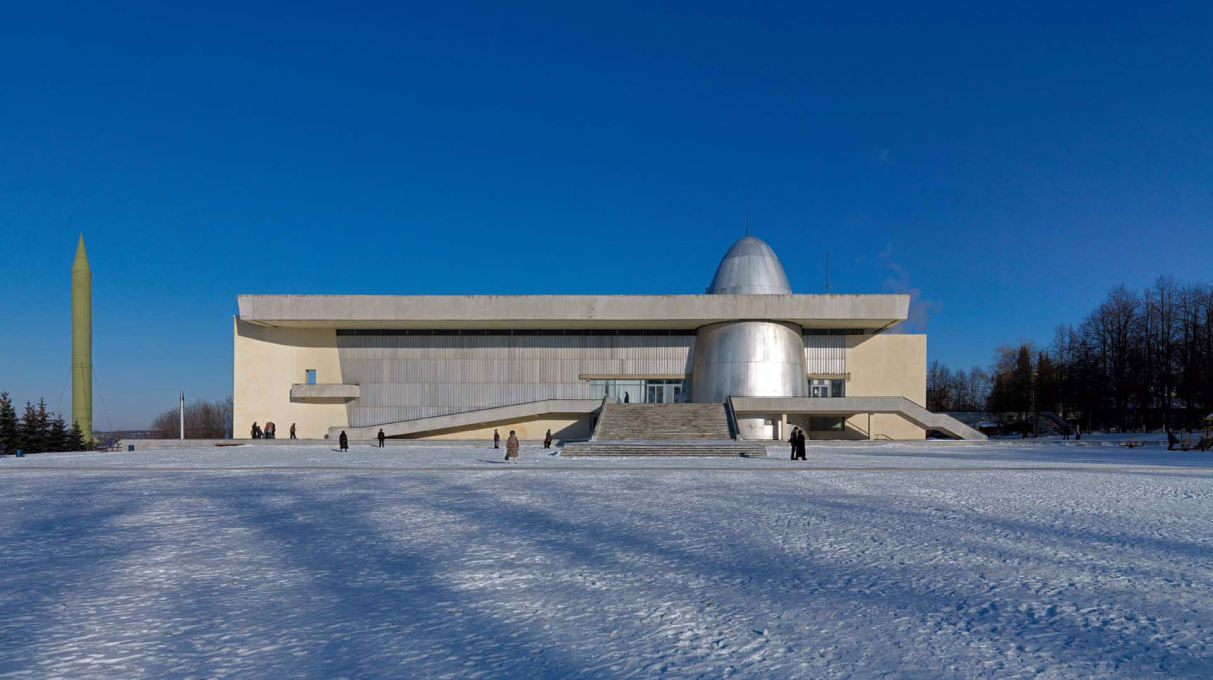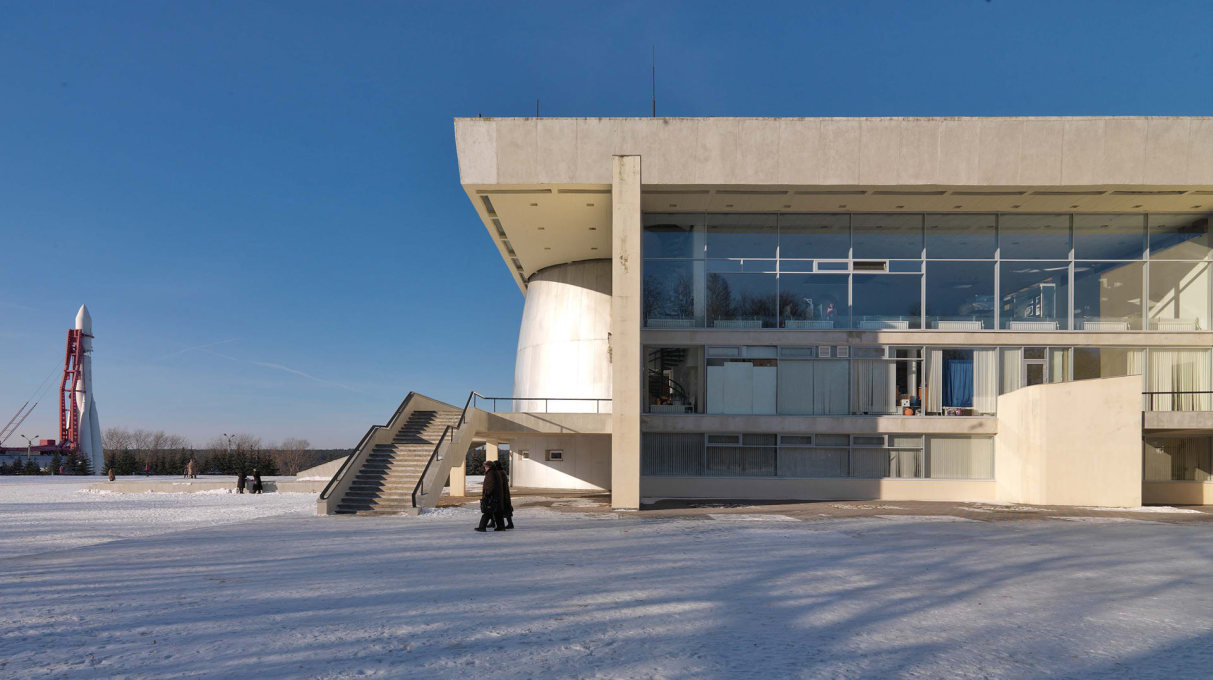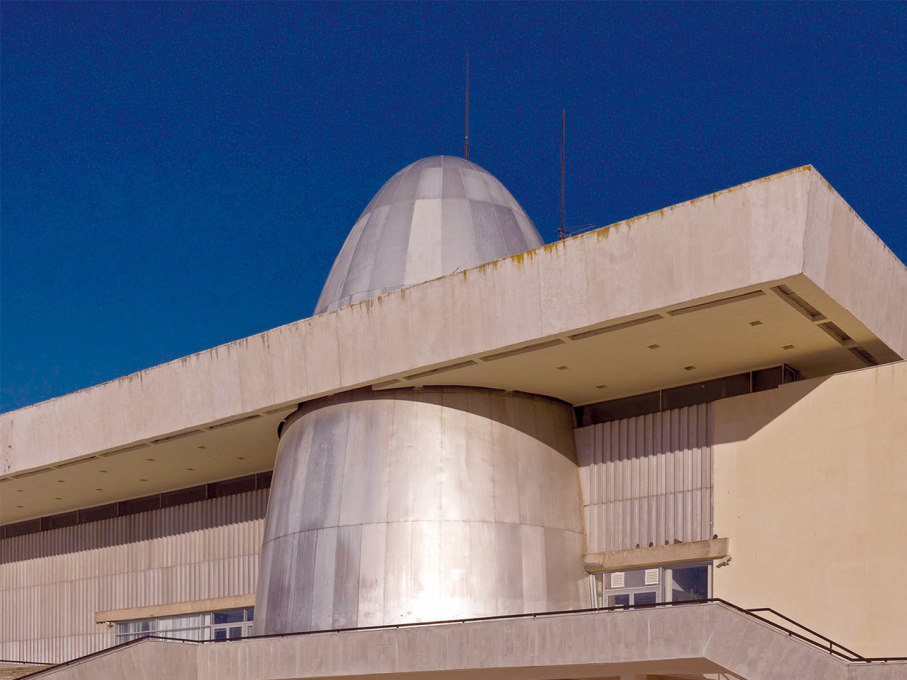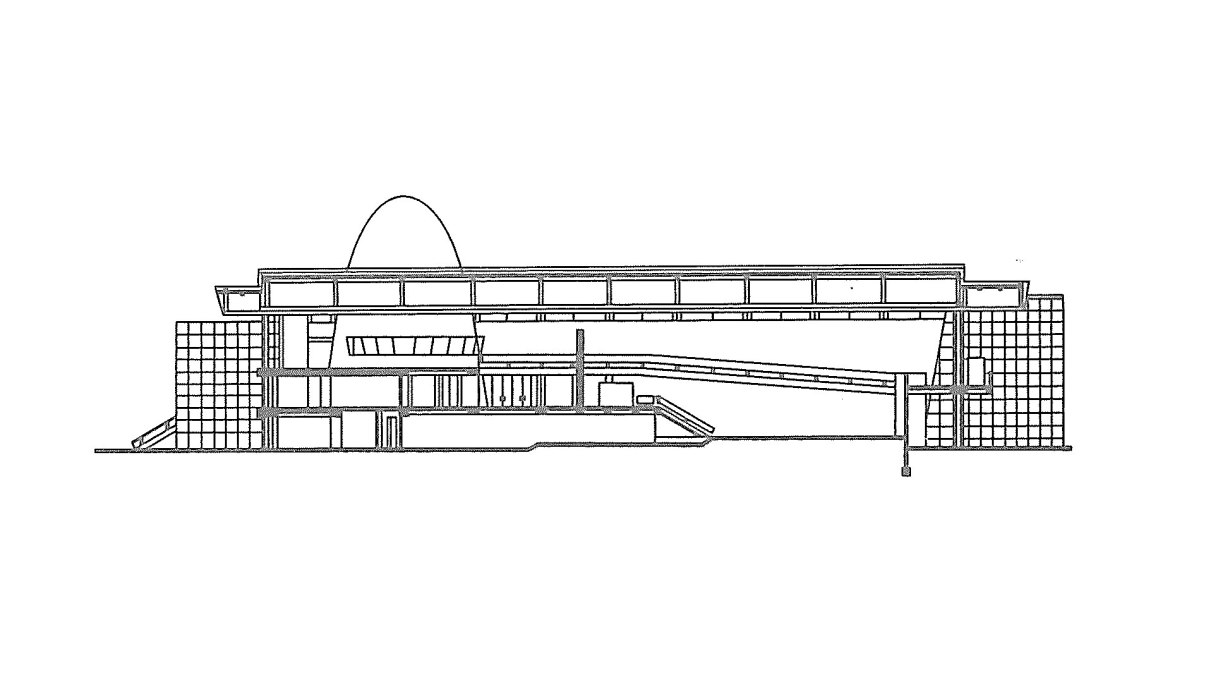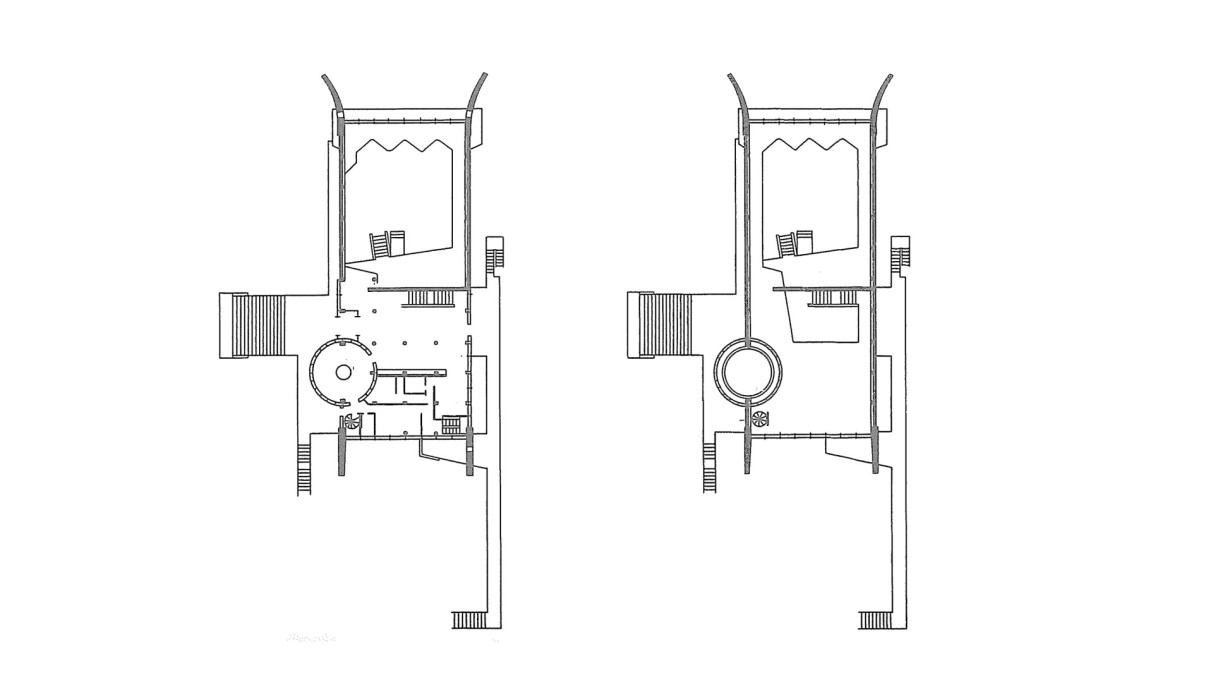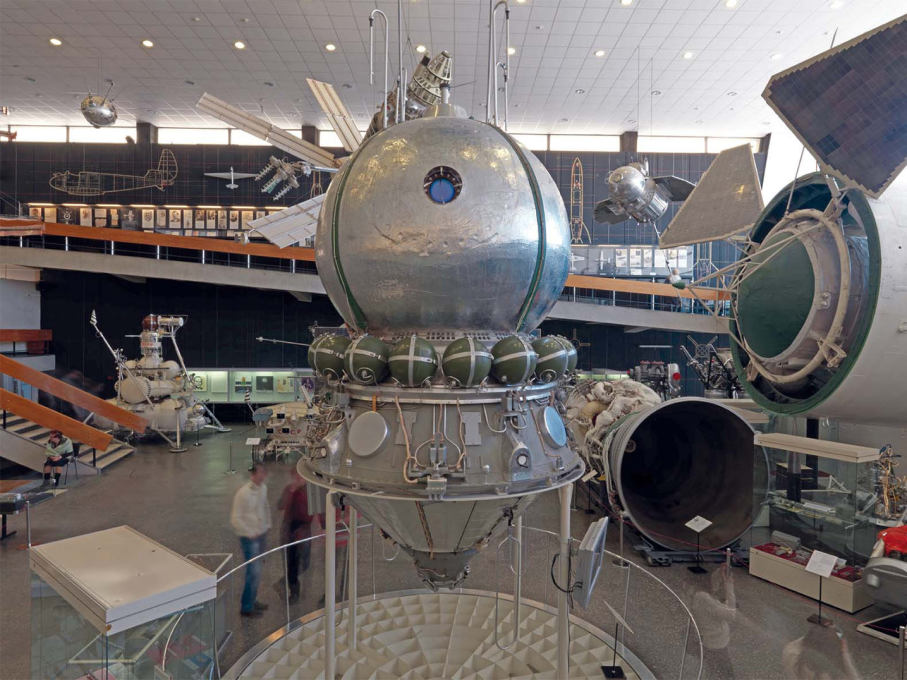Philipp Meuser, author of an upcoming book on Soviet space architect Galina Balashova (previewed in his article in uncube issue no. 19), is an expert on Russian cosmonautics. Here he reports from Kaluga, a small town south-west of Moscow, which is home to a museum dating from 1967, that is devoted to the subject. Its spacey, retro-futuristic dome and interior, jam-packed with its collection of relics from the Soviet space programme, make it a fantastic Space Building of the Week.
In recent years, young researchers have been rediscovering Soviet modernism (1955-1985) as a distinct chapter in architectural history. This was a period when planning and construction were entirely state-controlled. Under the motto “public wealth, private modesty”, elaborately designed communal buildings contrasted with industrially standardised accommodation. The theatres, stadiums and museums fulfilled the state’s call for quality architecture, while the required quantity of residential units was guaranteed by adherence to guidelines and norms.
This contrast is especially striking in the architecture of the former Soviet Union, with its monotonous dormitory suburbs and its iconic communal buildings in the city centres. No research so far has been devoted to the residential developments, but the “lighthouses of Socialist architecture” are becoming increasingly popular – even if the catalogue of key works between Stalin and Glasnost has yet to be completed. One such building that is still largely unknown in the West is the Museum of Cosmonautics in Kaluga.
Seen from space, Kaluga is a stone’s throw from Moscow. But travelling by Elektrichka, local trains with frozen windows in winter and dusty air in summer, the 200-kilometre journey south-west from the capital to the small town (known during Soviet times for car manufacturing) can take a long time. Here, deep in the provinces, stands an architectural gem of Soviet modernism: the Museum of Cosmonautics, a classic sculptural volume from the 1960s with broad stairways and a bullet-shaped dome. The aluminium-clad dome recalls the shape of the tailspin-simulation tower in Berlin-Adlershof that was built in 1936 for aerodynamic experiments. The link may not have been deliberate, but it reflects the architectural sophistication of two buildings both designed to serve aeronautics and space flight, though in different ways – one as a practical test facility, the other as a prestigious museum. In Kaluga, the dome houses an auditorium.
The museum was designed by a collective comprising of Boris Barkhin, Evgeny Kireev, Nataliya Orlova, Valentin Strogy and Kirill Fomin. In 1960, the group prevailed over competition including M. Pankov, who proposed an architectural volume rising diagonally out of the ground in front of a 50-metre pointed memorial, and Viacheslav Loktev, whose design included a large red sphere representing a suspended planet. The jury chose the Barkhin group’s more functionalist proposal, which was accentuated by a mosaic by Andrei Vasnetsov. The complex opened in 1967, at a time when the Russian space programme had reached its peak. After Russia sent the first dog (Leika) and the first man (Yuri Gargarin) into space, it was the USA’s Apollo 11 that made it to the moon first – a big defeat for the Russians, who never again made it to pole position in the Space Race again.
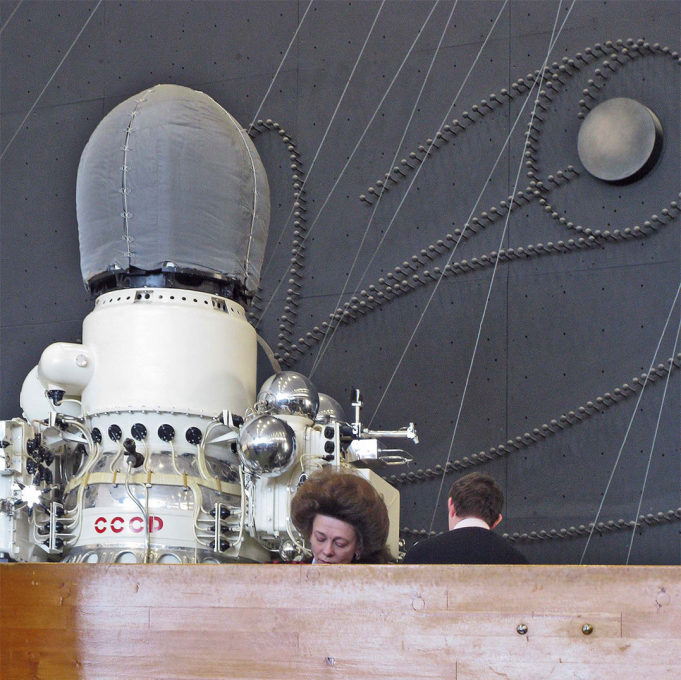
Over time, the museum in Kaluga has developed into a pilgrimage destination for school classes and admirers of Russia’s exploits in space travel. Its rooms have now filled up with all manner of relics of Soviet cosmonautics: from a replica of the never-used LOT moon shuttle to the Mars probes 1 to 4, and even cosmonaut food in tubes and pills. As at all state museums in the former Soviet Union, the staff in Kaluga are at pains to fulfill the didactic demands of the Russian understanding of culture. In a picturesque location overlooking a reservoir, the museum faces south with a large terrace and broad stairway. In front of the building is an empty space the size of two football pitches, and on the slope down to the reservoir, at a proper distance from the museum building, stands the replica of a Vostok rocket. This overall arrangement almost gives the impression that one might be able to watch the rocket being launched from the museum’s balcony.
The reason for choosing Kaluga (of all places) as the location for a museum was both trivial and propaganda-based. Konstantin Tsiolkovsky, the founding father of Russian cosmonautics, spent most of his life in this city on the Oka. Here, in 1903, he published the seminal ideal rocket equation, establishing the foundation for all subsequent rocket tests and space flights. Hence the building’s full name: “State Museum of the History of Cosmonautics – Konstantin Eduardovich Tsiolkovsky”.
- Philipp Meuser is an architect, author, journalist, publisher, curator, and photographer based in Berlin. Together with his wife Natascha Meuser he founded an architecture practice in 1996 and a publishing house, DOM publishers, in 2005.




